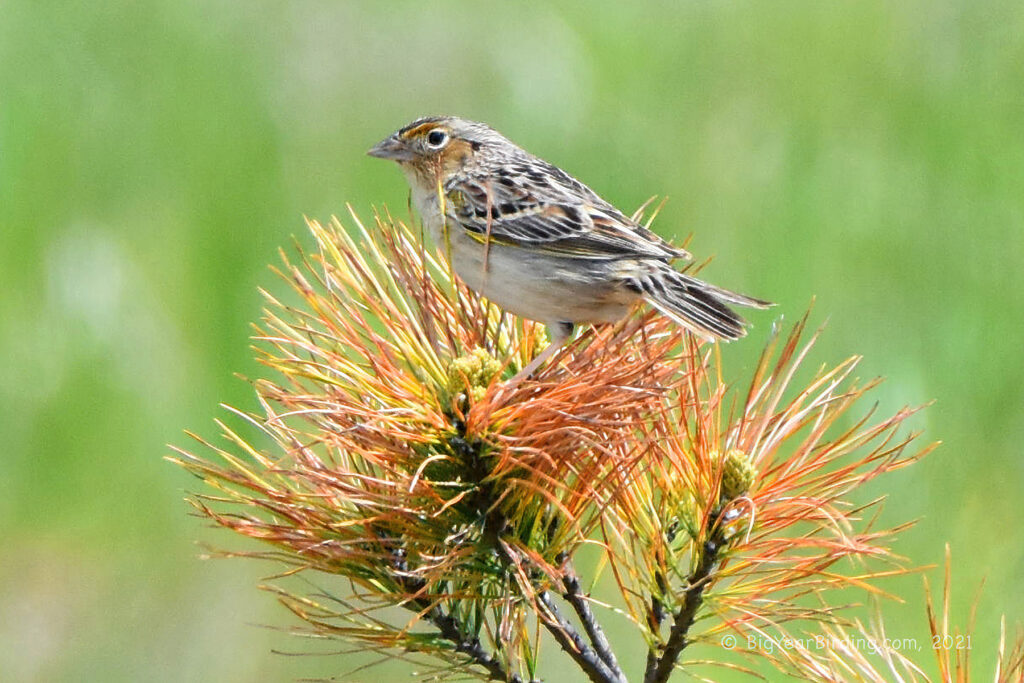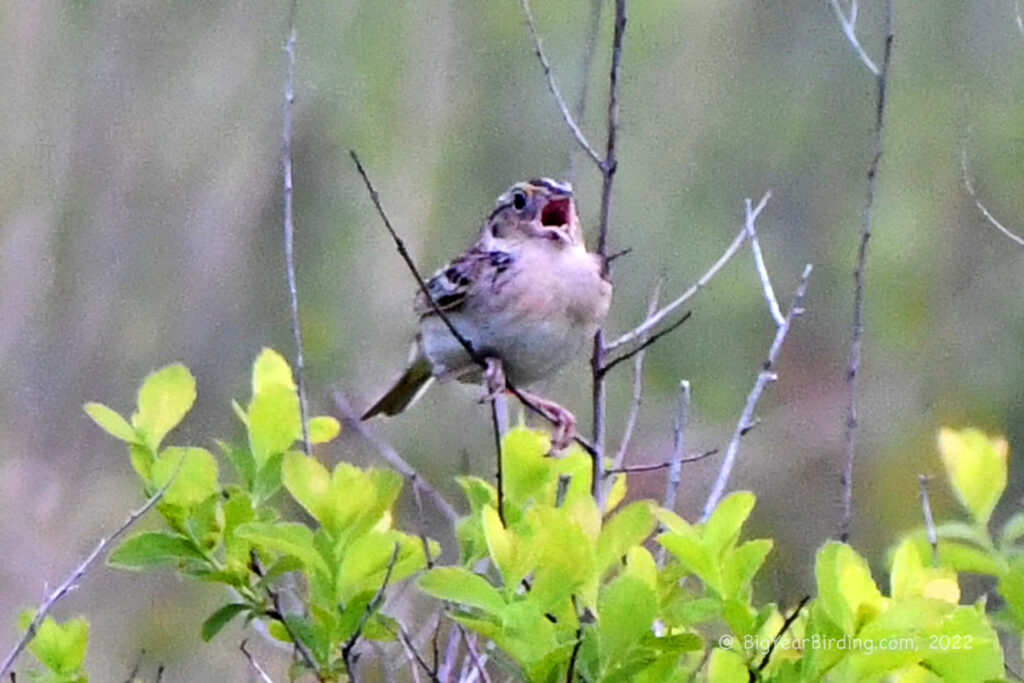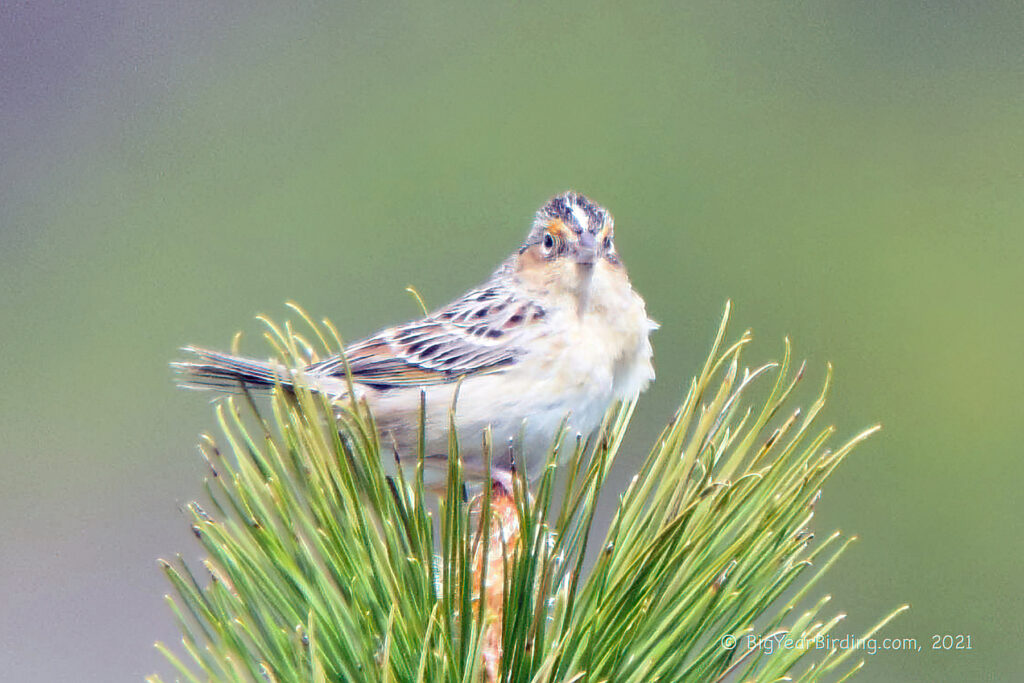
The Grasshopper Sparrow (Ammodramus savannarum) is a small, secretive bird native to North America. It measures about 4.5 to 5 inches in length and weighs approximately 0.4 to 0.6 ounces, making it one of the smallest sparrows in North America. The Grasshopper Sparrow has a short, stout beak, and its plumage is mostly brown with black and white stripes on its head and back, and a buff-colored chest. Its wings are also striped, and it has a distinctive white eye-ring.

One of the most distinguishing field marks of the Grasshopper Sparrow is its distinctive insect-like song. The male birds produce a buzzing or trilling sound that resembles the sound of a grasshopper or cricket. This song is essential for mate attraction and territorial defense during the breeding season. Additionally, the male’s head and neck feathers are often raised during singing, giving the bird a distinctive appearance.
The Grasshopper Sparrow breeds in the central and eastern parts of North America, including the Great Plains, the Midwest, and the eastern seaboard. During the winter, these birds migrate to southern Mexico and Central America. They prefer to inhabit open grasslands and prairies, where they forage for insects and seeds on the ground. Due to their secretive nature, they can be challenging to spot, but listening for their distinctive song is often the easiest way to locate them.
Conservation of the Grasshopper Sparrow has become a concern in recent years due to habitat loss and fragmentation caused by urbanization and agricultural practices. Populations have declined in many areas, leading some conservation organizations to take action to protect and restore their grassland habitats. Efforts have included creating and managing grassland reserves, implementing prescribed burns to maintain grassland habitats, and developing incentives for farmers to adopt bird-friendly practices.

In summary, the Grasshopper Sparrow is a small, secretive bird with distinctive insect-like songs and plumage. It measures about 4.5 to 5 inches in length and weighs approximately 0.4 to 0.6 ounces. It inhabits open grasslands and prairies throughout central and eastern North America during the breeding season and migrates to southern Mexico and Central America during the winter. Due to habitat loss and fragmentation, conservation efforts are necessary to protect this species and its grassland habitats.
